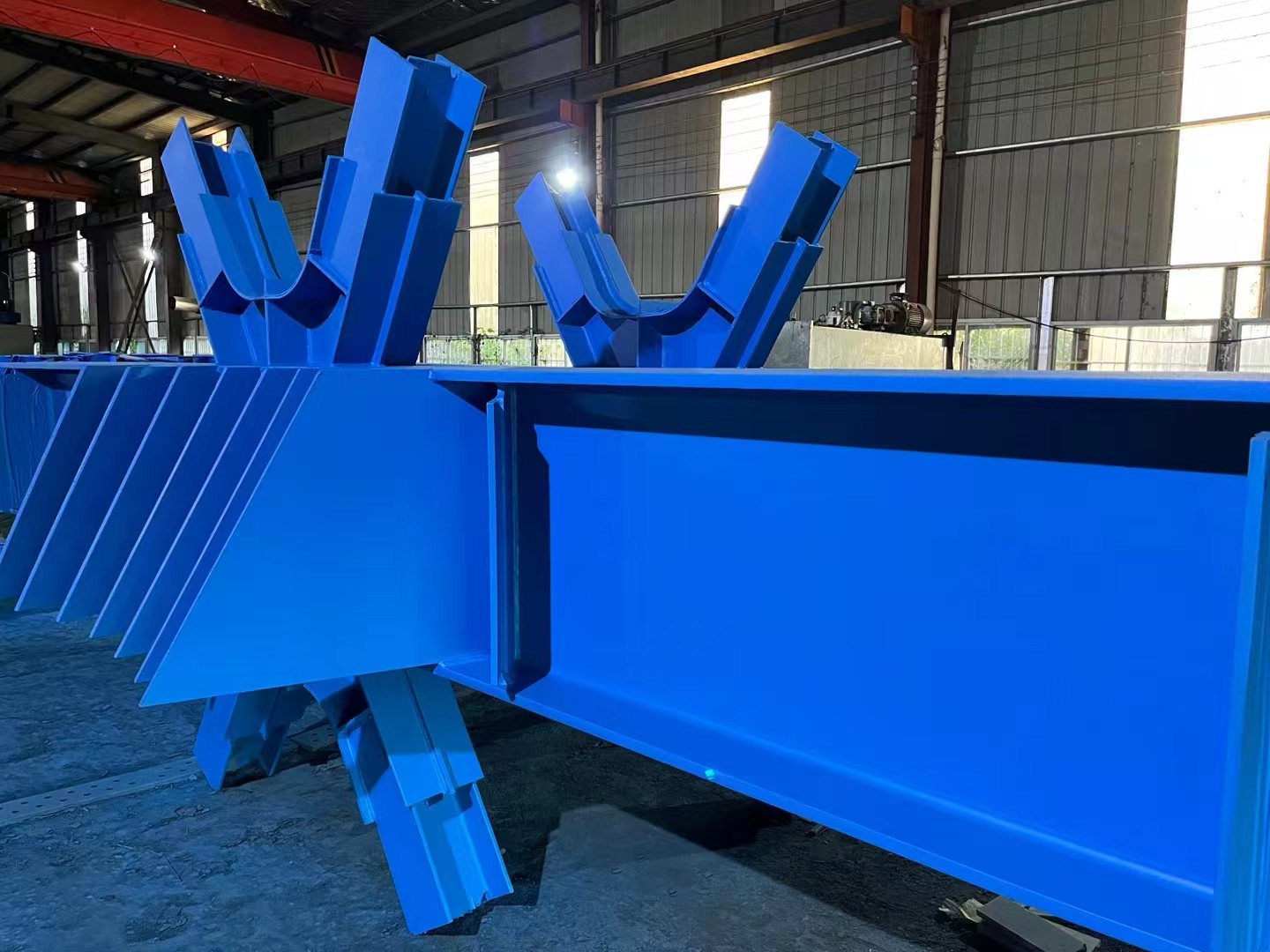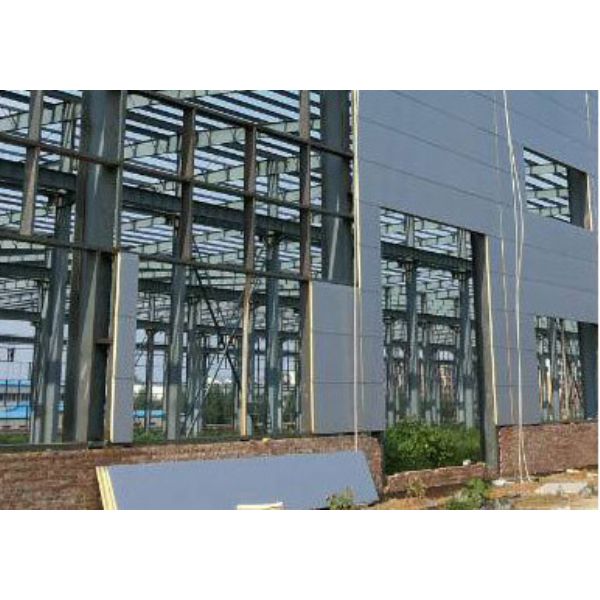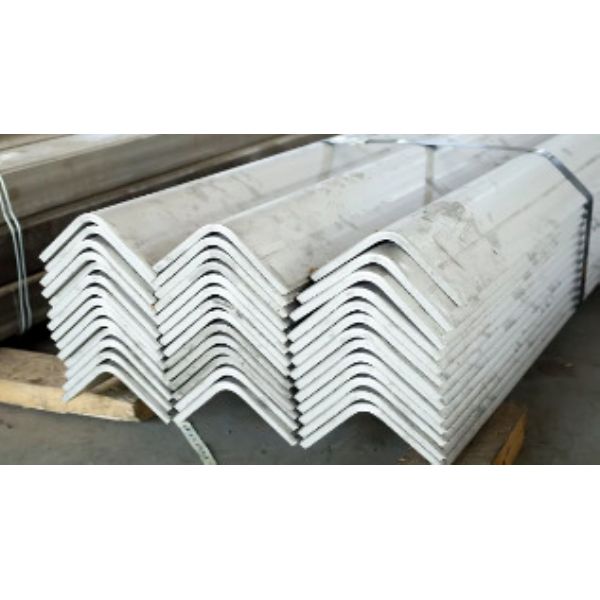steel structure factory delivery for Indonesia’s nickel-cobalt processing and beneficiation lines demands speed, precision, and reliability. This project showcases a steel structure factory solution engineered for corrosive, high-load operations—covering design coordination, shop fabrication, logistics, and on-site erection to millimeter-level tolerances. Completed in April 2022, the 1,540-ton scope accelerated commissioning and established a maintainable, upgrade-friendly base for the steel structure factory.
Project Quick Facts
| Project | Indonesia main processing & beneficiation engineering for nickel-cobalt projects |
|---|---|
| Location | Indonesia |
| Structure Type | Multi-span rigid portal frames with truss roofs, pipe racks, platforms, and crane runways |
| Total Steel Weight | 1540 Ton |
| Completion | April 2022 |
| Design & Fabrication Standards | GB/EN/AISC, local wind & seismic codes |
| Protective System | Hot-dip galvanizing (as applicable) plus epoxy/PU coating system for C5-M exposure |
Scope of Work
- Engineering & Detailing: 3D coordination with process, MEP, and pipe racks; connection design; shop drawings optimized for industrial sequencing.
- Fabrication: CNC cutting, drilling, welding, trial assembly, and dimensional inspections aligned to the overall delivery plan.
- Surface Protection: HDG and multi-coat systems tuned for humidity, saline air, and process chemicals typical of nickel-cobalt processing plants.
- Logistics: Sequenced shipments and laydown planning by erection zone to avoid congestion and keep the critical path clear.
- Erection & Alignment: Primary frames, trusses, bracing, platforms, ladders, handrails, and crane beams installed with torque records.
- Turnover: Bolting logs, coating DFT records, NDT reports, and as-built files compiled for streamlined project handover.
Engineering Highlights
- Heavy-duty reliability: Members sized for dynamic loads from crushers, mills, conveyors, and overhead cranes, ensuring the steel structure factory remains stable in continuous operation.
- Precision interfaces: Anchor bolts, plinths, and pipe rack nodes matched to millimeter-level coordinates to minimize equipment shimming.
- Erection efficiency: Modularized sub-assemblies and standardized connections shortened crane time and improved lift safety across the project workfront.
- Corrosion resistance: Coating and galvanizing strategies tailored to coastal humidity and process exposure, extending maintenance cycles.
- Lifecycle value: Maintainable joints, access platforms, and standardized components reduce shutdown time and simplify future expansions.
Why a Steel Structure Factory Fits Nickel-Cobalt Beneficiation
For beneficiation plants that handle crushing, screening, thickening, and refining, a steel structure factory delivers clear-span bays and high live-load capacity without bloating foundations. Shop-prefabricated frames and trusses reduce site risk and compress the schedule, while standardized grids preserve space for future process equipment. In Indonesia’s challenging climate, this approach also enables robust corrosion control through hot-dip galvanizing plus multi-coat paint systems, improving uptime and lowering lifetime cost.
Just as important, a steel structure factory can be modularized by functional zone—receiving, primary crushing, stockpiles, process buildings, pipe racks, and utilities—so commissioning can proceed progressively. This staged strategy brings forward revenue while keeping later upgrades straightforward, an advantage that traditional concrete-dominant solutions struggle to match.
Construction Sequence (Milestones)
- Foundation readiness & anchor-bolt survey: Verifies datum, plinth elevations, and grid accuracy for the facility.
- Delivery & laydown planning: Packages by erection front to keep crane paths clean and minimize double-handling.
- Primary frames & truss lifts: Safe-lift studies and taglines manage wind exposure; initial bracing locks the geometry.
- Secondary members & bracing: Purlins, girts, and K/X-bracing installed; crane runway alignment and splice torque checks recorded.
- Access systems: Platforms, stairs, ladders, and handrails fitted to maintain safe access during and after structural erection.
- Final QC & handover: Bolt-tension audits, DFT verification, holiday testing, snag closure, and turnover dossier issuance.
Materials & Standards
- Steel Grades: Q355B / S355JR / A572 (as specified) selected for strength, weldability, and overall economy.
- Bolting: ISO/ASTM high-strength friction grip; site torque records maintained.
- Welding: WPS/PQR qualified; NDT regime (UT/MT/PT) proportional to risk class.
- Coatings: Zinc-rich primer + epoxy build coats + PU finish or HDG per exposure class.
- Design Codes: GB/EN/AISC; local wind/seismic load combinations verified.
These material and code selections keep the steel structure factory robust and serviceable across decades of operation.
Quality & HSE Assurance
Quality was driven by an ITP that governed every stage—from material traceability to final punch-list. Welder qualifications, NDT results, and bolt-tension logs were compiled into a turnover dossier that makes future audits straightforward. On the HSE side, daily permit-to-work reviews, lift plans, exclusion zones, and weather windows ensured safe progress during structural erection. The result was a predictable installation with minimal rework and controlled risk exposure across the steel structure factory work zones.
Results & Performance
- On-time delivery: Steel structure factory components totaling 1,540 tons erected to schedule in April 2022.
- Precision fit-up: Tight tolerances reduced equipment shimming and sped up conveyor alignment.
- Durability: Coating/galvanizing system extended maintenance intervals and supported uptime targets.
- Expandability: Structural grids and reserved capacity simplified later line upgrades within the same structural envelope.
Together, these results demonstrate a resilient, efficient steel structure factory suited to Indonesia’s climate and production targets.
Case Study Narrative: From Design Freeze to Commissioning
The project began with a multi-discipline model review to coordinate structural frames with crushers, screens, tanks, and pipe racks. Final loads and drift limits were agreed before connection design, allowing shop drawings to proceed without bottlenecks. During fabrication, barcode-based traceability and trial assemblies ensured clean bolt-up on site. Logistics teams sequenced deliveries by crane reach and lift order, avoiding laydown congestion in the steel structure factory. Once on site, survey-controlled set-outs, calibrated torque tools, and staged bracing ensured plumbness and consistent fit-up, keeping the program predictable.
A key lesson was the value of modular sub-assemblies. Pre-assembling truss segments and platform modules in the yard cut crane time and improved safety, while standardized connection details reduced the learning curve for crews. As the structure took shape, as-built surveys confirmed plumbness and runway alignment, limiting later corrections. The approach yielded earlier functional testing of conveyors and feeders—bringing forward the production timetable and improving overall performance of the steel structure factory.
FAQs
What defines a steel structure factory in heavy processing plants?
A steel structure factory is an industrial building system composed of engineered frames, trusses, pipe racks, and elevated platforms designed for rapid installation and high reliability. For beneficiation, the system supports heavy dynamic loads, integrates with process equipment, and provides clear spans for conveyors and tanks, cutting downtime during commissioning and future upgrades—key benefits of a steel structure factory.
How is corrosion handled in a nickel-cobalt steel structure factory?
We design the steel structure factory around exposure classes—combining hot-dip galvanizing where needed with zinc-rich primers, epoxy build coats, and PU topcoats. Shop-controlled blasting and curing produce consistent results, while field inspections verify DFT and defects (holiday testing). The outcome is an envelope that resists humidity, saline air, and process chemicals, lowering lifetime maintenance across the steel structure factory.
Can the plant expand later without major shutdowns?
Yes. A steel structure factory is laid out on standardized grids with pre-planned reserve capacity at key nodes. This enables bolt-on bays, mezzanines, and runway extensions with limited disruption. By modularizing process zones, the steel structure factory can add equipment while maintaining production, protecting uptime and ROI typical of a well-planned steel structure factory.
Call to Action
Planning a new steel structure factory or upgrading your beneficiation lines? Request a fast, engineered proposal including tonnage, schedule, and budget options tailored to Indonesia’s codes and climate. Our team will evaluate loads, corrosion class, and constructability to deliver a facility that meets today’s targets and tomorrow’s expansions.






